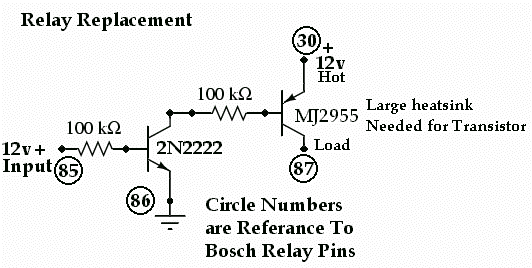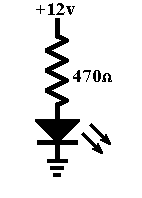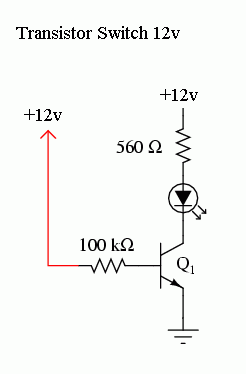switching leds with relay on sensor wire
Printed From: the12volt.com
Forum Name: Relays
Forum Discription: Relay Diagrams, SPDT Relays, SPST Relays, DPDT Relays, Latching Relays, etc.
URL: https://www.the12volt.com/installbay/forum_posts.asp?tid=100507
Printed Date: November 17, 2025 at 3:58 AM
Topic: switching leds with relay on sensor wire
Posted By: adso2004
Subject: switching leds with relay on sensor wire
Date Posted: December 28, 2007 at 9:43 AM
im doing a mod to a korg kaoss pad and putting it it a guitar.

its been done before by loads of people. but the mod i want hasnt.
the screen is lifted off the pad and the sensor wires are extened via a DB9 cable.
the 4 wires can be seen here

i cant run an led off the pad cos its not advised the add to the voltage and mess around with the signal
what i want to know is
1) since the 4 wires are sensor wires and not power wires can i used a relay to switch between 2 LEDs one for when the pad is being touched (ON) and one for when its not (OFF)
and
2) what sort of relay would i need?
much appricated
Replies:
Posted By: hotwaterwizard
Date Posted: December 29, 2007 at 9:55 PM
Yes I think a Relay could be used. I need a picture or a Diagram. The ones posted do not work.
-------------
John DeRosa (Hotwaterwizard)
Stockton California
When in doubt, try it out !
Posted By: tedmond
Date Posted: January 02, 2008 at 9:44 AM
sounds possible, just repost ur pictures, use photobucket or soethiong that is reliable.
Posted By: KPierson
Date Posted: January 02, 2008 at 1:46 PM
The only issue I see here is: 1. LEDs use less current then most relays
2. Most relays are electromagnetic - meaning they will introduce noise in to the system when they latch/unlatch If you are deadset on using a relay you'll need, at a minimum either a solid state relay or a reed relay. Both relays are known for having small current draw and neither are electromagnetic so they will be less noisey. You're best bet would be to just use some standard transistors. Transistors can act like an electronic switch, but require virtually no current to turn them on (an even better option would be a mosfet, but most likely is not needed in this case). Once you have the transistors in place you can use them to fire a SPDT electromagnetic relay with reliability and virtually no induced noise. ------------- Kevin Pierson
Posted By: adso2004
Date Posted: January 02, 2008 at 6:52 PM
sounds like you know what ya on about, being a novice to this im not sure of what sort of curcit i would need to build
i will post a pic of the set up i have and if you could fill in the blanks how a transistor and a relay would help the solution that would be brill thanks
Posted By: hotwaterwizard
Date Posted: January 02, 2008 at 8:07 PM

------------- John DeRosa (Hotwaterwizard)
Stockton California
When in doubt, try it out !
Posted By: hotwaterwizard
Date Posted: January 02, 2008 at 8:10 PM
For a small load like an LED you could use a 2N3906 instead of the MJ2955. Donit forget t6he Resistor on the LED 
------------- John DeRosa (Hotwaterwizard)
Stockton California
When in doubt, try it out !
Posted By: hotwaterwizard
Date Posted: January 02, 2008 at 8:16 PM
Oh Duuu Here is a circuit that uses only one Transistor. Use 2N2222 Transistor. 
------------- John DeRosa (Hotwaterwizard)
Stockton California
When in doubt, try it out !
Posted By: KPierson
Date Posted: January 02, 2008 at 9:00 PM
^^^ That base resistor (100Kohms) is a bit high for my liking. With a beta of 100 the transistor will not be able to outut enough current to run the resistor at the specified value (21.4mA). With a beta of 100, the transistor will only be able to output a total of 12mA. I would recomend a base resistor of 10K. This will pull, at most, 1.2mA of current from the signal - a neglible amount. However, with the 1.2mA and a 75 beta (more likely what you'll get with the 2N2222 in this voltage/current range) you'll see a max of 90mA on the output - more then enough to run the LED at 21.4mA. The important thing here to consider, though, is the current requirement of the LED you choose to use. This could effect the collector resistor value (560 ohms) which in turn could effect the base resistor. ------------- Kevin Pierson
Posted By: hotwaterwizard
Date Posted: January 02, 2008 at 9:04 PM
Why use a transistor at all? Just use the LED and Resistor! 
------------- John DeRosa (Hotwaterwizard)
Stockton California
When in doubt, try it out !
Posted By: hotwaterwizard
Date Posted: January 02, 2008 at 9:10 PM
I believe he may be looking for a comparator circuit. https://home.cogeco.ca/~rpaisley4/Comparators.html ------------- John DeRosa (Hotwaterwizard)
Stockton California
When in doubt, try it out !
Posted By: KPierson
Date Posted: January 02, 2008 at 9:34 PM
The LED alone will draw ~25x more current the the transistor with the 10K base resistor. If he is truely concerned about keeping the integrity of the signal in tact the transistor would be the way to go. In most systems you could ignore a 25mA load, but on a signal wire there may not be enough current to drive the light directly and still transmit the data reliably. Without more information it would be impossible to tell. if it were me, I would be more comfortable with the smaller load, especially considering the parts are dirt cheap, and we arn't adding many components. ------------- Kevin Pierson
Posted By: hotwaterwizard
Date Posted: January 02, 2008 at 9:36 PM
hmm I think he wants one Led on when nothing is on and one on when it is on.
-------------
John DeRosa (Hotwaterwizard)
Stockton California
When in doubt, try it out !
Posted By: KPierson
Date Posted: January 02, 2008 at 10:08 PM
If the two states are necesarry, or even to simplify everything, just use a SPDT reed relay (I didn't know they made SPDT reed relays, I've never seen one). Assuming a 12vdc control circuit: https://search.digikey.com/scripts/DkSearch/dksus.dll?Detail?name=PB283-ND At 12vdc it draws 5.3mA! ------------- Kevin Pierson
Posted By: adso2004
Date Posted: January 03, 2008 at 8:14 AM
i think some of you might of misunderstood what i mean.
thats prob my fault for not explaning right
the main issue is that the switch from one led to the other can only be of the 4 SENSOR wires of a XY pad on a korg kaoss pad

the screen is not powered bye anything, all the power wires remain in the unit. so only the sensor wires are what are left to switch the led
on blue one for off when the xy pad is not being touched.
and one rapid LED for on when the xy pad is being touched causing the sensor wires to tell the unit the xy position
Posted By: hotwaterwizard
Date Posted: January 03, 2008 at 8:43 AM
Still not explained well. If this thing is enclosed how are you going to add a sensor? You could monitor the current draw from the battery, If there is a fluxuation then an LED can light up. ------------- John DeRosa (Hotwaterwizard)
Stockton California
When in doubt, try it out !
Posted By: KPierson
Date Posted: January 03, 2008 at 9:01 AM
I'm not familiar with a Korg Kaoss pad, but it now sounds like instead of monitoring button pushes you're trying to monitor the movement of an alalog controller? Much more information is needed here. ------------- Kevin Pierson
Posted By: adso2004
Date Posted: January 03, 2008 at 12:29 PM
like i said im not to good at this so ill try my best
- the korg kaoss pad is an audio effects controller, normally used by DJs and to a lesser extent Guitarists
https://uk.youtube.com/watch?v=Ak--xicxDqI
https://uk.youtube.com/watch?v=mhNejyIyxdE
- the devices screen is its anolog contoller imput, so depending on what setting and where you put your finger on the pad.
-the screen is connected to the main PCB by a ribbon cable containing 4 sensor wires.
- the LED seen in the unit is not the one im talking about, that is imbedded in the main PCB
-in the guitar mod shown on the second youtube vid, you extend the four sensor wires to the guitar using a cable.
what i want to build is an LED system inside the guitar thats independant of all that. that is only activated when the pad (now in my guitar is touched
any other questions?
thanks for your imput guys.
Posted By: KPierson
Date Posted: January 03, 2008 at 12:41 PM
There are too many unknowns for me to give you any information. I would guess that hotwaterwizard is on to something with his advice about the comparator circuit. You will need to know exactly what each of the four wires does in order to interface with it. If you can't tell us the function of the four wires then all we'll be doing is guessing, which is all we've been doing anyway. ------------- Kevin Pierson
Posted By: adso2004
Date Posted: January 03, 2008 at 3:57 PM
yer i know thanks for advice. ill run the 4 wires up to multi meter to see if theres a change in voltage and report back
thanks again
Posted By: hotwaterwizard
Date Posted: January 03, 2008 at 8:44 PM
|



